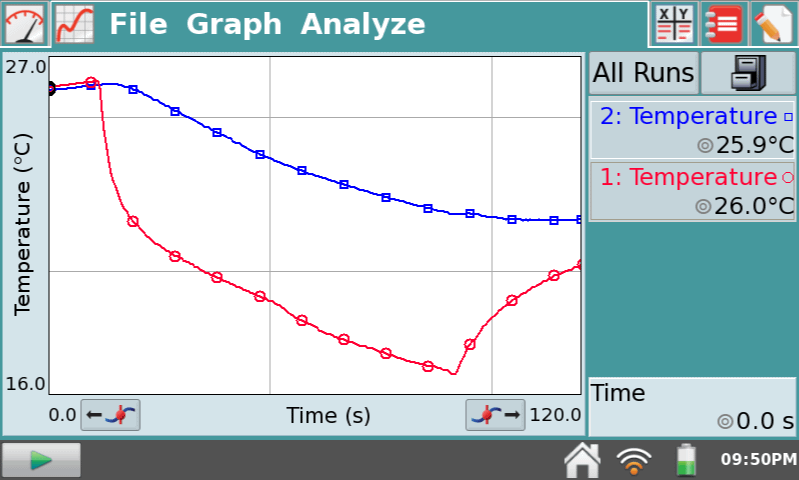Evolution is one of the “big ideas” in the new AP Biology curriculum and one of the “core ideas” in the Framework for K–12 Science Education, the foundation for the Next Generation Science Standards. Many teachers have been asking how our sensors can be used to teach concepts in evolution. Recently, we took a standard insulator experiment and gave it an evolutionary twist that uses the Surface Temperature Sensor.
Studying vertebrate ecology is an excellent way to explore adaptation and evolution. Mammals and birds are endotherms, meaning they regulate their internal body temperature using metabolic processes. Most other vertebrates are ectotherms, maintaining their body temperature through external sources. Most species of ectotherms are limited to a narrow temperature profile. In contrast, marine mammals have derived characteristics that make it possible for them to maintain their body temperature in different water temperatures. Blubber and fur are two adaptations that provide insulation to marine mammals.

In this experiment using the Surface Temperature Sensor, students explore the properties of blubber and fur. Students attach a Surface Temperature Sensor to a gloved hand, then apply different insulating materials, such as shortening and bubble wrap. They submerge their hand in ice water and collect data to determine temperature change over time.
Vegetable shortening and bubble wrap mimic blubber and fur. Vegetable shortening has a much lower thermal conductivity than water, so its thermal properties make it analogous to blubber. Bubble wrap is composed of numerous pockets of trapped air, so its thermal properties should resemble the fur of a polar bear or sea otter. Bubble wrap is a cheap and accessible material to use as a stand in for fur or hair.
Have your students design their own insulating gloves to turn this lab into an engineering opportunity. Consider using natural limits and constraints in nature to shape the constraints of their design.
